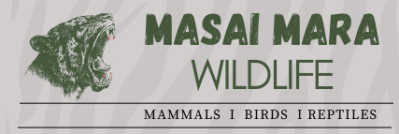- Common Names: Roan Antelope
- Scientific Name: Hippotragus equinus
- Swahili Name: Korongo
- Maasai Name: Orkimosorong
- Size:
- Head-Body Length: 260 cm (102 inches)
- Shoulder Height: 140 cm (55 inches)
- Gestation: 38–41 weeks
- IUCN Status: Least Concern, although populations are decreasing due to habitat loss and poaching.
Recognition and Appearance
The Roan Antelope is one of Africa’s largest antelope species, ranked just below the Eland, Kudu, and Bongo in size. Its most distinguishing features are its fawn-colored coat, large backward-curving horns, and the striking black-and-white facial markings resembling a mask. The horns of both males and females are long and scimitar-shaped, with ringed bases, adding to their imposing appearance. Roan antelopes also have long, tasseled ears and a stiff mane that runs along their neck and back.
The name “Roan” refers to the animal’s coat color, a mixture of white and fawn-colored hair, much like that of a horse with a “roan” coat. Their robust build and size may lead to confusion with horses from a distance, but up close, the unique facial mask and long horns clearly set them apart.
Habits and Behavior
Roan Antelope are shy and typically elusive. They are diurnal, most active during the early morning and late afternoon. While they may be wary of human presence, they exhibit bold behavior when defending themselves or their young from predators, capable of using their long horns in defense.
Roan herds are usually small, consisting of a dominant male, several females, and their offspring. Bachelor males tend to form separate groups, while females give birth during the wet season and hide their calves for several weeks to protect them from predators. Calves are only introduced to the herd when they are strong enough to keep up and escape threats.
These antelope are strong grazers, favoring tall grasses found in savanna and grasslands, although they can also browse on herbs and shrubs when needed. Access to water is crucial for them, and they are often seen near waterholes or rivers.
Where to Find
Historically, Roan Antelope were present in the Serengeti, but their numbers have drastically dwindled due to poaching and habitat degradation. Today, they are considered possibly extinct in the Serengeti-Mara ecosystem. Efforts have been made to reintroduce Roan to the region, particularly from nearby Ruma National Park in Kenya, where populations remain stable. Conservationists view reintroduction as a viable strategy to restore this species in areas where they have disappeared.
In other parts of Africa, Roan can still be found in savanna woodlands and grassy plains, particularly in protected areas where anti-poaching measures are strictly enforced.
Feeding and Diet
Roan Antelope primarily graze on grasses, making them key grazers within their ecosystem. Their diet consists mostly of tall, coarse grasses, though they will also browse on shrubs and herbaceous plants during dry periods when grass is scarce. Their foraging habits often overlap with those of other herbivores, but Roan antelopes prefer areas with fewer competitors, which reduces the presence of large predators.
Conservation Status
The Roan Antelope is listed as Least Concern on the IUCN Red List, but their population is decreasing. Habitat loss due to agricultural expansion, illegal hunting, and competition with livestock are significant threats to their survival. In many parts of Africa, Roan populations have diminished, and in regions like the Serengeti-Mara, they are considered possibly extinct.
Efforts to protect the species include habitat preservation, reintroduction projects, and anti-poaching initiatives. Programs to reintroduce Roan from more stable populations, such as those in Ruma National Park, are critical to maintaining biodiversity in the Serengeti-Mara ecosystem.
Interesting Facts
- Roan Antelope are excellent jumpers, capable of clearing obstacles up to 2.5 meters (8 feet) high, despite their large size.
- Their social structure is matriarchal, with females playing a central role in the herd. The dominant male protects the herd and maintains breeding rights.
- Although generally shy, Roan Antelope are known to stand their ground and defend themselves using their horns when threatened by predators.
The Roan Antelope, with its impressive stature and beautiful appearance, is a magnificent animal to witness in the wild. Conservation efforts to restore populations in places like the Masai Mara offer hope for the continued survival of this iconic species in East Africa.
